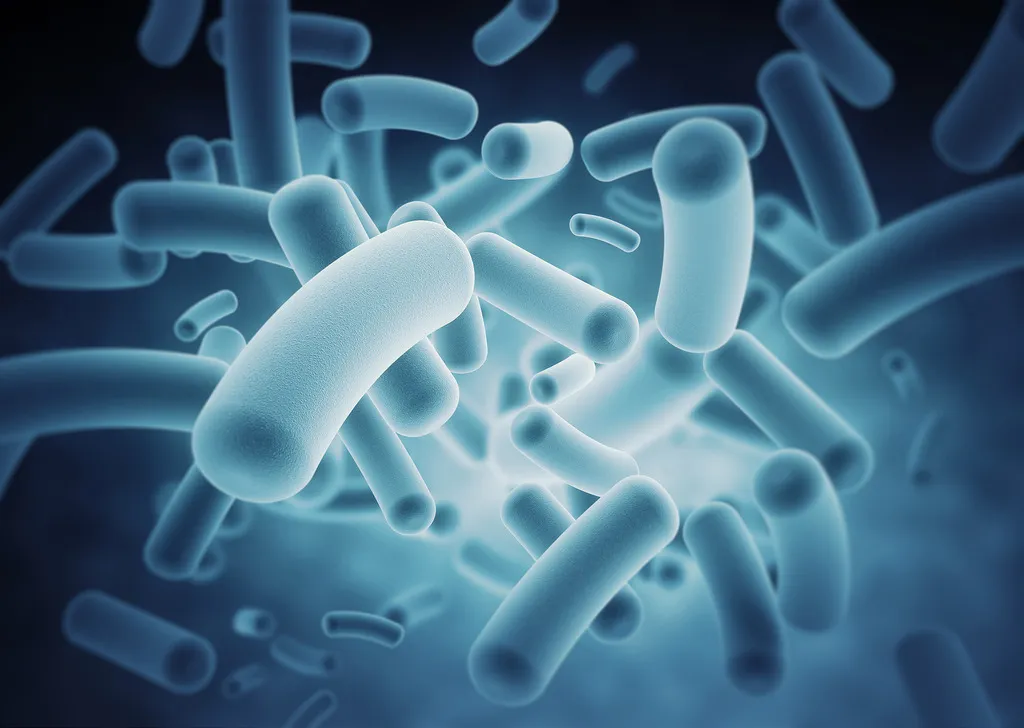A new study in mice showed how a microbiome transplant made them… younger?

How do we measure age? For most of us, it’s the number of times that our planet has circled around the Sun since we’ve been born, but many scientists also look at other measurements.
One method is to look at biological age, a measurement of how well an individual’s biology is holding up. We see a bunch of changes in our body as we get older, such as:
- Our skin loses its elasticity and becomes weaker and wrinkled
- Our eyesight worsens
- Our muscles grow weaker (and it’s more difficult to build muscle)
- Our immune system grows weaker and is less capable of handling infections
- Our organs weaken, including our brain (scary but true fact: your brain loses mass and shrinks as you age!)
By combining these factors, we can create a biological age for comparison between individuals. For example, we could look at two men, both age 50 — but if one of the men has eaten a better diet, exercised more regularly, and has a genetic advantage over the other, he may have a significantly younger biological age.
Biological age is great, because it is potentially reversible, and it directly impacts our quality of life. After all, we’re more likely to die because of age-related declines in our body’s ability to sustain itself. If we could find a way to keep our biological age in the thirties, there’s no telling how long we might live in chronological age!
There are already some ways for us to reduce our biological age. Losing excess weight can help reduce the strain on organs, and exercise — even if started later in life — can improve muscle mass and tone.
But could we perform a single intervention that made us biologically younger?
What about a microbiome transplant?
New research suggests that this may, in fact, be feasible! A study in mice, published in January in the journal Microbiome, showed a whole bunch of health improvements in our little furry friends, just from getting a new batch of youth-associated gut microbes.
Let’s take a quick look at what your gut microbiome is, how it might affect your health, and what we found when we did a young-to-old transplant.
Longevity research is about to get fecal!
Why we care about examining the gut microbiome 🔗
I’m a microbiome scientist by study, meaning that I did my PhD research examining diverse groups of bacteria. Specifically, I focused my studies on the human gut microbiome, which is the collection of many different types of bacteria that live in unstable, uneasy semi-harmonious partnerships inside our small and large intestine.
Feel free to check out the above article to get more information on microbiomes in general. Focusing specifically on the bacteria living in our intestinal tract, we already know about some direct benefits of their presence:
- They produce vitamins and compounds that our body absorbs and uses (sometimes called postbiotics).
- They help prevent “bad” bacteria (the ones that might make us sick and give us diarrhea) from getting a foothold.
- They help our immune system train itself, so that it can fight any invaders without overreacting.
We also know that our microbiome changes based on many different factors. We can change our microbiome by:
- Changing our diet
- Changing where we are living
- Changing who we interact with
- Getting older (that’s right: growing older leads to a less stable, more personalized gut microbiome!)
So the relationship is a two-way street; our actions change our gut microbiome, but it seems that our gut microbiome, in turn, influences our own health.
This is why research into our gut microbiome is so interesting. Not only does our microbiome influence our health, but it seems to be open to being modified, through changes in our own actions. We can control a feedback loop that results in direct benefits for us.
And this brings us to our recent study, by a group at the Severance Biomedical Science Institute in Seoul, Korea. Let’s see what they did, and what they found.
Transplanting the microbiome of a young mouse… into an old mouse
As this title suggests, the process here was fairly straightforward; the researchers collected microbiome samples from normally raised mice at three different ages: young (5 weeks old), middle age (12 months old), and old age (25 months old).
To make sure there was no risk of the results being skewed by potentially dangerous microbes that might already be present, these mice were raised in a facility called a specific pathogen free (SPF) facility. The mice were tested regularly to confirm that they didn’t have any contaminating pathogens. (The researchers also did a separate test, giving the mice antibiotics before the transplants began, to confirm that the results weren’t tainted by existing microbes.)
For eight weeks, mice at all 3 ages (young, middle-aged, old) received a dose of feces by mouth, twice per week. (It doesn’t sound tasty, but it’s a great way to get the microbes into a mouse.) After the 8 weeks, the mice were put through a battery of tests to assess various measures of their biological age, and then euthanized.
So what did they find? What happened?
First, testing of the microbiomes of the mice revealed that the transplants did have an effect; levels of various different bacterial families changed over time, based on which microbiome sample they were receiving. They also didn’t hurt the mice, as all of the microbiome transplant recipients remained healthy and didn’t lose weight from the procedure.
In the older mice that received a transplant of the “youthful” microbiome, there were significant improvements in muscle strength and skin quality. Grip strength increased in the youthful-microbiome-receiving mice increased by approximately 30–50%, and their muscle fibers grew significantly thicker, as if the mice had bulked up! The skin grew thicker and retained more moisture, giving it a more youthful appearance.
There was a slight reduction of brain size in the mice that received the old-age microbiome, but in functional tests, the mice didn’t perform significantly worse. There was also significant brain growth in the very old mice that received the youthful microbiome, but these mice were, unfortunately, too weak to participate in functional tests.
Finally, the researchers delved a bit deeper into how the microbes might be causing these changes in the host. They found one gene in particular, Dbn1, that seems to play a positive role in water retention and barrier function of the skin. When the mice received a youthful microbiome transplant, Dbn1 expression went way up (a 171-fold increase!).
What does this mean for us? 🔗
These results are really promising, but we should also take them with a grain of salt.
First, this experiment is being done in mice, with a mouse microbiome. This means that the results aren’t directly going to be applicable to us, because humans have different bacteria in their guts than mice. It’s much easier to experiment in mice, because ethics boards are much more willing to let us sacrifice mice than human subjects.
Second, lab mice do not have the same level of variety in microbiome influences as humans. Mice largely live in the same environment and eat the same food, day in and day out. This means that there’s a lot less variability in their microbiomes than humans have.
If we want to apply this to humans, we’ll still need to do a lot of research:
- We’re going to have to identify what a good “youthful” human-derived microbiome would even look like. Because of all that variability that we have, person to person, it’s going to probably be a lot of work to isolate, and only a few individuals will have an “ideal” youthful microbiome growing in their system.
- We’d also need to determine how we can introduce this youthful microbiome sample into our system. Unlike the mice in this experiment, we probably don’t want to squirt poop-derived samples down our throat, twice a week. (Would you do that to improve your muscle and skin?)
- We will need to figure out which genes are influenced by the gut microbiome to promote youthfulness. This will also be more difficult, because it’s generally frowned upon to euthanize humans for tissue testing.
- Once we know which genes are being influenced, we’ll need to work back in the other direction, to figure out which microbes are responsible for interacting with the host’s genes. It’s possible that this will be tricky as well; some bacteria will likely produce an effect in some individuals but not in others.
This is a lot of work, and it’s going to take a long time. We might find some initial success with straight microbiome transplants, but one of the challenges of microbiome work is how personalized it is, and how much variation we see between individuals.
Any attempt to bring this to humans will be dogged by inconsistency, as we work to figure out the mechanism of how, exactly, the youthful microbiome is influencing us.
In summary: a “young” microbiome revitalizes its host, even if the host is old 🔗
We’ve always known that there’s a bidirectional impact from our gut microbiome, the diverse collection of bacteria that lives in our lower intestinal tract (small and large intestine). The food that we eat and the environment we live in has an impact on changing our gut microbiome — and, in turn, our microbiome interacts with our body and seems to influence our own cells in a wide variety of ways.
Now, a new study on mice shows that the microbiome may offer a method for us to improve our longevity. When the microbes from a young mouse are transplanted into the body of an older mouse, the older mouse seems to grow younger! The older mice see improvements in their muscle density and strength, their skin strength and water retention improved, and they even saw a modest reversal of age-related brain shrinkage.
This technique won’t be immediately applicable to humans, but it offers hope for the strategy. In the future, perhaps we’ll be popping “poop pills” in order to keep ourselves feeling stronger, younger, and happier!




